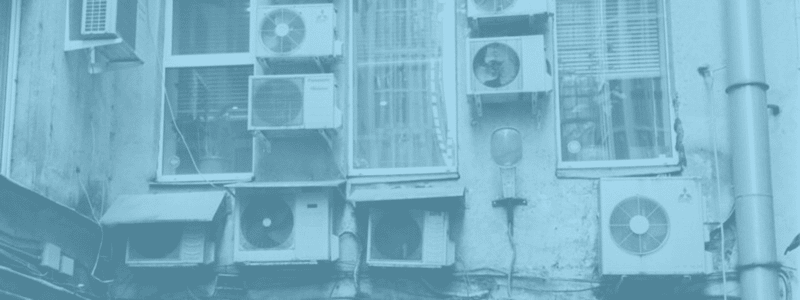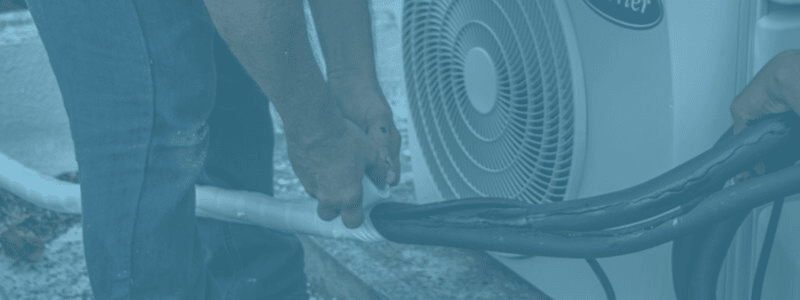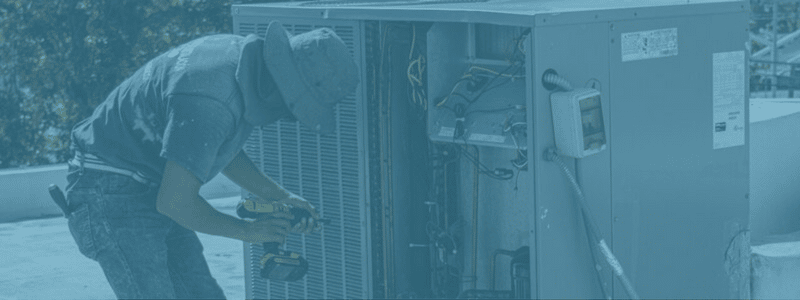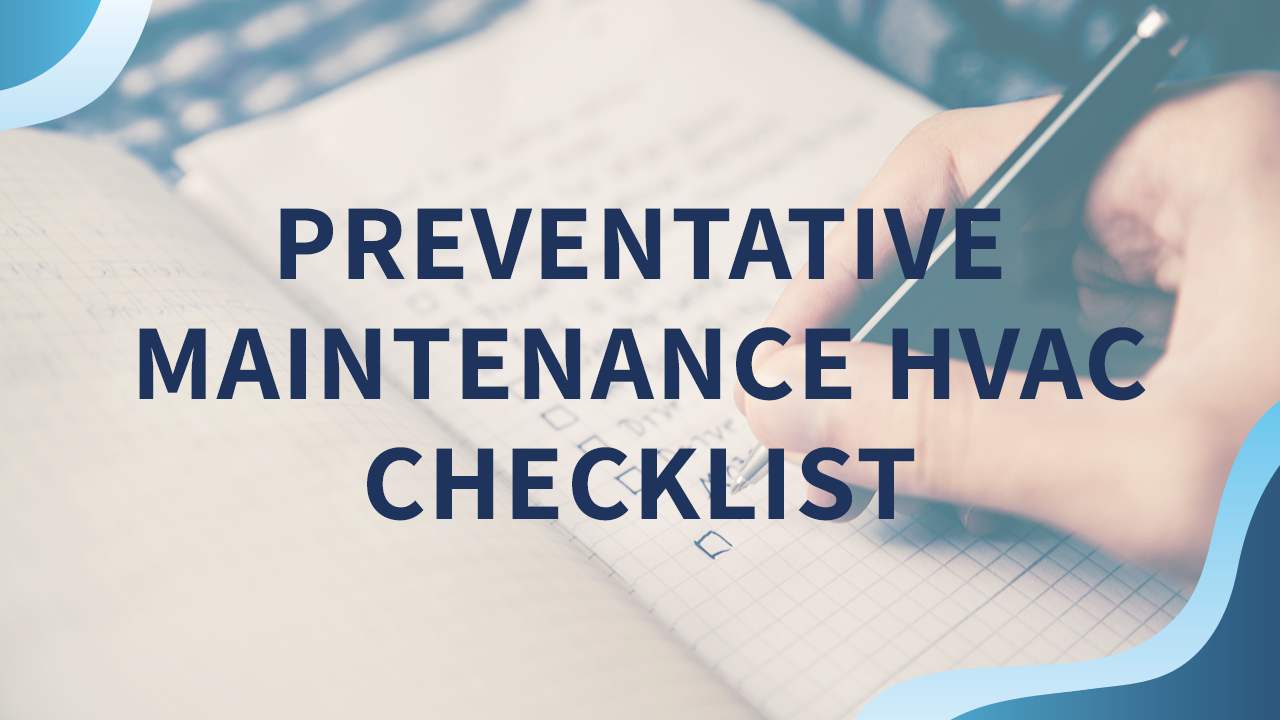Ask any HVAC professional how to improve heating and cooling efficiencies, and you’ll probably get the same answer repeatedly.
“A preventive maintenance HVAC checklist will ensure your HVAC system runs efficiently and effectively. Tasks as basic as changing filters can significantly impact overall HVAC operations.”
While some preventative maintenance tasks are simple to remember, others are often forgotten. Likewise, the property owner or maintenance personnel can usually complete simple tasks. Still, others should only be conducted by a licensed HVAC professional.
Make sure not to skip any preventive maintenance HVAC steps. Check out our checklist of maintenance tasks to keep your HVAC systems operating at peak performance all year long.


Change Filters
One of the most straightforward yet crucial preventive maintenance HVAC checklist tasks is replacing air filters regularly. When filters are dirty, the furnace will operate less efficiently, resulting in higher energy costs and unnecessary strain on the HVAC system. At a minimum, change the filter twice a year when converting from heating to cooling and again when converting back. Ideally, filters can be changed quarterly or, in some environments, as often as monthly for best results.
Clean Compressors
While most HVAC maintenance involves preparing the furnace for operation, it’s also important to remember steps to improve the air conditioner’s annual decommission. For example, remove debris around the compressor and clean components with a brush or a vacuum after turning off the power to the unit.
Cover A/C Units
Protect decommissioned air conditioning units from harsh winter weather by covering the equipment using a cover found at your local hardware or home improvement store. Alternatively, a piece of plywood can be set atop AC units, provided it’s large enough to cover the entire unit and provide an overhang. The board can be secured by placing a brick or stone on top.
Trim Landscaping and Clear Debris.
The end of summer is a great time to trim long grasses or foliage that might have grown around HVAC equipment since spring maintenance was performed. Likewise, dust and debris that may have accumulated on outdoor units should be cleared and cleaned during seasonal care. Finally, as autumn progresses, it’s essential to routinely clear fallen leaves from around HVAC units.
Inspect and Clean Ductwork, Vents, and Chimneys
A clean HVAC system is an efficient HVAC system. So when performing preventive maintenance, don’t forget to inspect ducts, vents, chimneys, and flus for dust and debris and clean as needed. Not only will this boost energy efficiencies, but it will also increase fire safety. After all, the leading cause of the 52,000 heating-related residential fires that occur each year is a failure to clean equipment, particularly chimneys.


Listen for Signs of Disrepair or Malfunction
When you deploy your furnace for the season, be sure to listen carefully when you turn it on. Unexpected sounds could indicate something is wrong with your heating system. Strange noises could indicate blockages or loose parts. If you can’t identify the source of the sound, consult an HVAC professional.
Inspect Electrical Connections
The wear and tear of equipment are inevitable, but some damage is more dangerous than others. When conducting seasonal preventative maintenance, be sure to inspect all HVAC electrical connections. When the unit vibrates, connections can loosen over time. Protect HVAC assets, properties, and tenants by having electrical connections inspected, cleaned, and tightened before they cause more significant damage.
Check for Leaks
Does your HVAC system include a boiler? This equipment can experience leaks caused by corrosion, damaged seals, pressure issues, or age. Look for any water leaking around boilers and contact an HVAC professional if any leaks are identified. While checking for leaks, inspect properties for costly air leaks. After all, you can’t heat a building efficiently if the warm air escapes into the cold winter weather. Look for cracks or gaps around faucets, fixtures, windows, doors, vents, attack hatches, weather stripping, baseboards, fans, and even cable and phone lines entry points. Gaps can then be repaired with caulk or weather stripping.
Test Airflow
Blocked airflow can reduce HVAC efficiency by as much as 15 percent, so testing it during seasonal maintenance is a vital task. Blower components can be cleaned and adjusted to promote optimal airflow and avoid unnecessary energy drains. If unsure, contact an HVAC professional to conduct an airflow test and diagnose issues within ducts and other equipment.
Reprogram and Test Thermostats
For best efficiency, thermostats should be programmed at slightly higher temperatures in the summer and lower levels in the winter. For example, a thermostat might be programmed to heat a building to 68 degrees in the winter and cool the property to 75 degrees in the summer. It’s also important to remember to test and replace thermostat batteries and ensure they properly control the furnace. Finally, for enhanced efficiency, swap out traditional thermostats with energy-efficient programmable thermostat models that can reduce heating costs by as much as 10 percent.


Preventive Maintenance HVAC Systems Checklist – Frequently Asked Questions
How important is a preventive maintenance checklist?
Preventive HVAC maintenance is vital to keeping your systems up and running year-round without falling into emergency repairs.
What is meant by preventive maintenance?
Preventative maintenance refers to maintenance performed on HVAC systems to prevent unexpected malfunctions.
What is a preventive maintenance checklist?
A preventive maintenance checklist is a detailed list of the technicians’ tasks to perform during a maintenance check of HVAC systems. It usually includes routine and non-routine tasks to ensure the system does not suffer any drastic failures.
Motili HVAC Preventive Maintenance
Motili’s technology platform allows property managers, owners, and investors to manage HVAC maintenance tasks and replacement jobs easily.
Motili handles all aspects of the job, from scheduling to ordering equipment to invoicing, making Motili the single point of contact for all property maintenance and equipment replacement.












